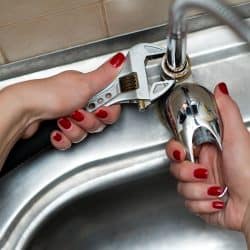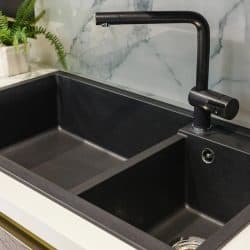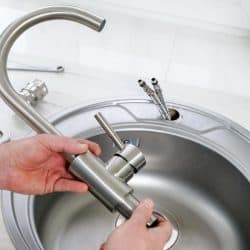You might be planning to replace your bathroom faucet with a model built for the kitchen. But now you’re wondering if it’s possible to install a kitchen faucet in the bathroom. We researched for you and consulted with different experts to give you the answer.
Homeowners can install kitchen faucets in their bathrooms. However, it's important to understand the differences between bathroom and kitchen faucets. Doing so will help in the preparation for the installation and use of kitchen plumbing fixtures in the bathroom.
The differences between bathroom and kitchen faucets often range from their sizes to the materials used. Continue reading as we talk about these dissimilarities in greater detail. We’ll also tackle other useful information such as how to convert certain faucets to fit specific plumbing setups.
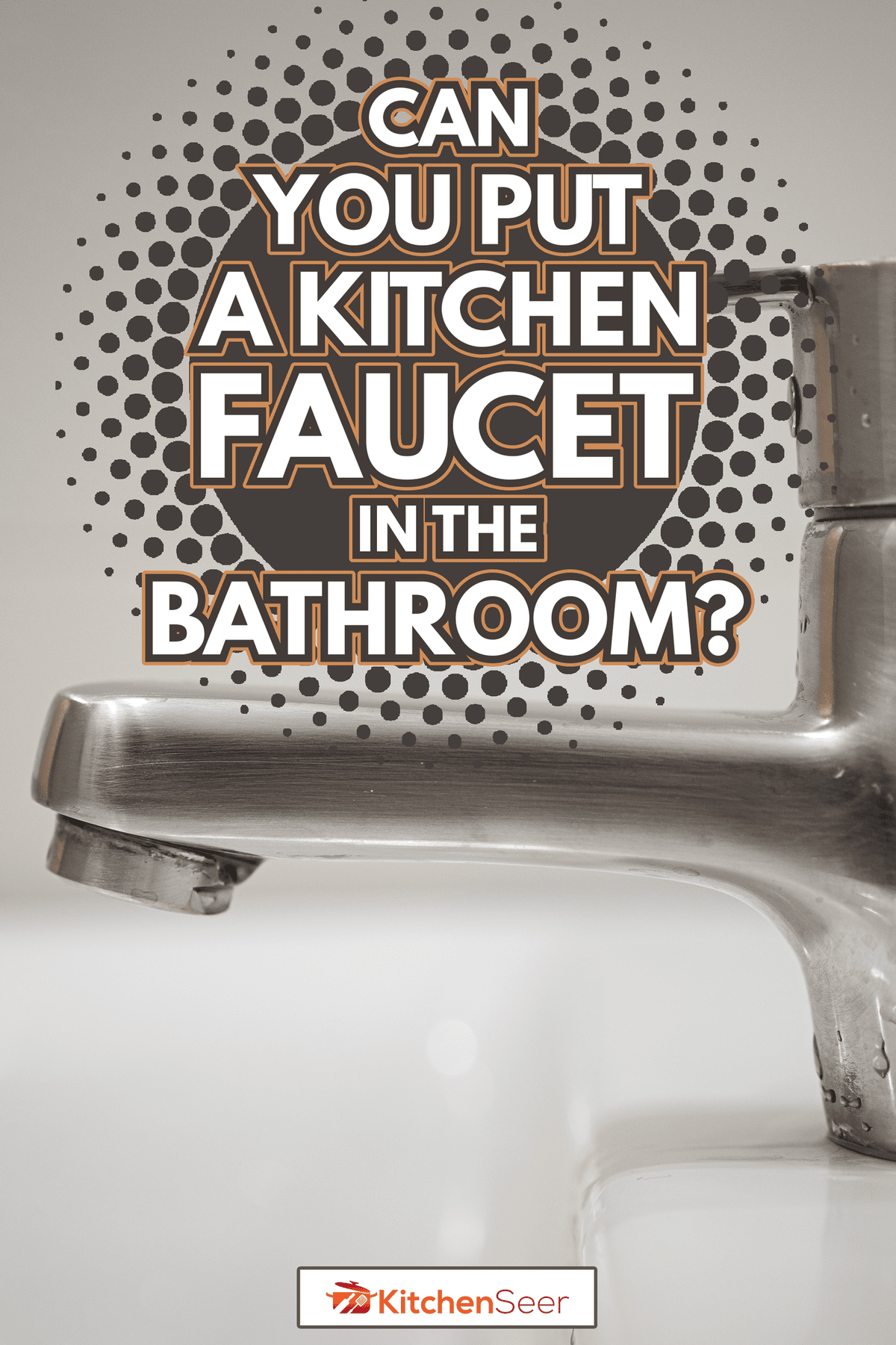
Can You Use Kitchen Faucet In Bathroom?
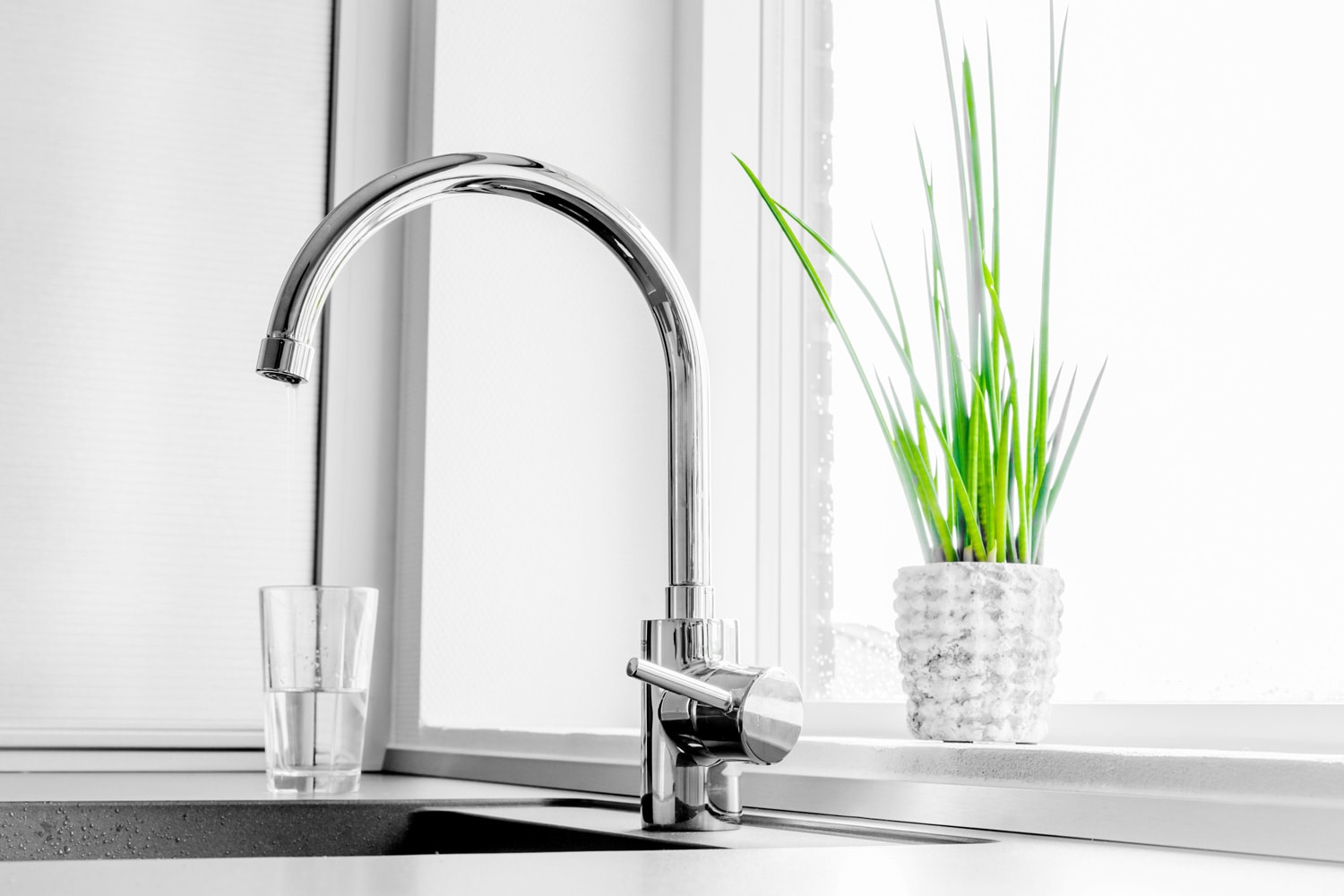
It’s possible to use a kitchen faucet in the bathroom. But keep in mind that kitchen and bathroom faucets often have different features and properties.
Understanding those dissimilarities will help you gain better knowledge on how to set up and use your preferred kitchen faucet in your bathroom. Some of these distinctions are:
Size
Bathroom sinks are generally smaller than their kitchen counterparts. The typical bathroom sink size ranges from 16 to 24 inches. On the other hand, kitchen sinks often have sizes that go from 25 to 36 inches.
The dissimilarities in sizes between bathroom and kitchen sinks can make the faucet installation process involve more steps than usual. For instance, some kitchen faucet models have 17.3-inch heights that should have relatively no problem fitting into kitchen sinks.
However, fitting the same faucets in smaller bathroom sinks can cause some installation issues. It’s because of the incompatibility with the dimensions that these problems arise.
Installation Process
Installation procedures between kitchen and bathroom faucets are also quite different. Many kitchen faucet installations typically only require a few steps, which makes it fairly easy for DIY beginners. However, assembling a bathroom faucet may require sizing requirements, which might become complicated.
Here’s a quick view of the installation procedures for kitchen and bathroom faucets. The information detailed below will give you a general idea about the differences between these fixtures' setup processes.
Installing a Bathroom Faucet
Assuming that the plumbing line is already in place, the first step to installing the faucet is to turn off the water flow going to the bathroom. Make sure to turn off both hot and cold water lines before continuing this job. After ensuring that you stopped the water going to the bathroom, here are the rest of the steps:
What You’ll Need
- Tupperware container
- Basin wrench
- Pliers
- Bathroom faucet kit
- Silicone or plumber’s putty
Step-by-Step Guide
- Place the Tupperware container underneath the P-trap. Then, remove the P-trap below the sink while ensuring to catch the excess water that comes out with the container.
- Slide the basin wrench up the supply line until you reach the nut that connects the line to the sink. Turn the nut clockwise with the wrench to remove the attachment.
- Use a pair of pliers to unscrew the drain from the bathroom sink.
- Remove the silicone or plumber’s putty off of the sink with water.
- Measure and take note of the distance between the holes in the bathroom sink.
- Connect the hot and cold supply lines to the new faucet.
- Mount and center the faucet to the appropriate holes in the bathroom sink.
- Reinstall the drain and make sure to seal it with silicone or plumber’s putty afterward.
- Reconnect and secure the P-trap and supply lines.
- Turn on the water flow and test the faucet to check for issues.
Check out this basin wrench on Amazon.
You can also take a look at the video below to learn more details about this installation process:
Installing a Kitchen Faucet
Like installing a standard bathroom faucet, stop the water flowing to the kitchen before proceeding with the installation job. Also, check the manufacturer’s instructions to identify if this job requires unique steps. After taking note of those precautions, continue with putting the faucet into the kitchen sink.
What You’ll Need
- Phillips screwdriver
- Wrench
- Pipe tape
- Basin wrench
- Kitchen faucet kit
Step-by-Step Guide
- Wrap the faucet’s connectors with pipe tape. Going four to five rounds with the tape per connector should suffice.
- Insert the kitchen faucet’s main components into the holes of the sink.
- Secure the fixtures with the washers and lock nuts that should be included with the kit. Tighten the connections with the wrench and/or Phillips screwdriver if necessary.
- Connect and secure the water supply lines to the faucet.
- Slowly turn on the water supply going to the kitchen faucet to check for leaks and other issues.
Check out this kitchen faucet on Amazon.
Watch the video below if you need a visual representation of the steps mentioned above:
Features
Although both bathroom and kitchen faucets share the same purpose of providing water, these two plumbing fixtures often have distinguishing features that set them apart. For instance, kitchen faucets often fall under different types like:
- Pull-outs: Generally has a detachable head to provide better reach.
- Pull-downs: Offers enhanced flow or spray control to allow users to reach corners of the sink.
- Pot fillers: Often installed at the backsplash to help fill pots and other containers with water.
On the other hand, the various types of bathroom faucets include the following:
- Bridge: Typically has a "bridge" design that connects the levers and the faucet with one branch.
- Center: Also called the center set, this type often has a handle mounted on the faucet.
- Spread-fit: Commonly sits below a countertop or vanity sink deck.
At this point, you might also be wondering if kitchen sinks come with drains. If so, you can read our post on the topic: Do Kitchen Sinks Come With Drains?
Materials
Kitchen faucets usually use corrosion- and rust-resistant materials such as brass, nickel, and zinc alloy. However, bathroom faucets generally use brass, stainless steel, and plastic.
The materials used to produce kitchen faucets often match the sinks for those rooms. Take a look at this post to find out more about the different types of kitchen sinks: 10 Types Of Kitchen Sinks
How To Convert A Single-Handle Faucet To A Double-Handle Faucet
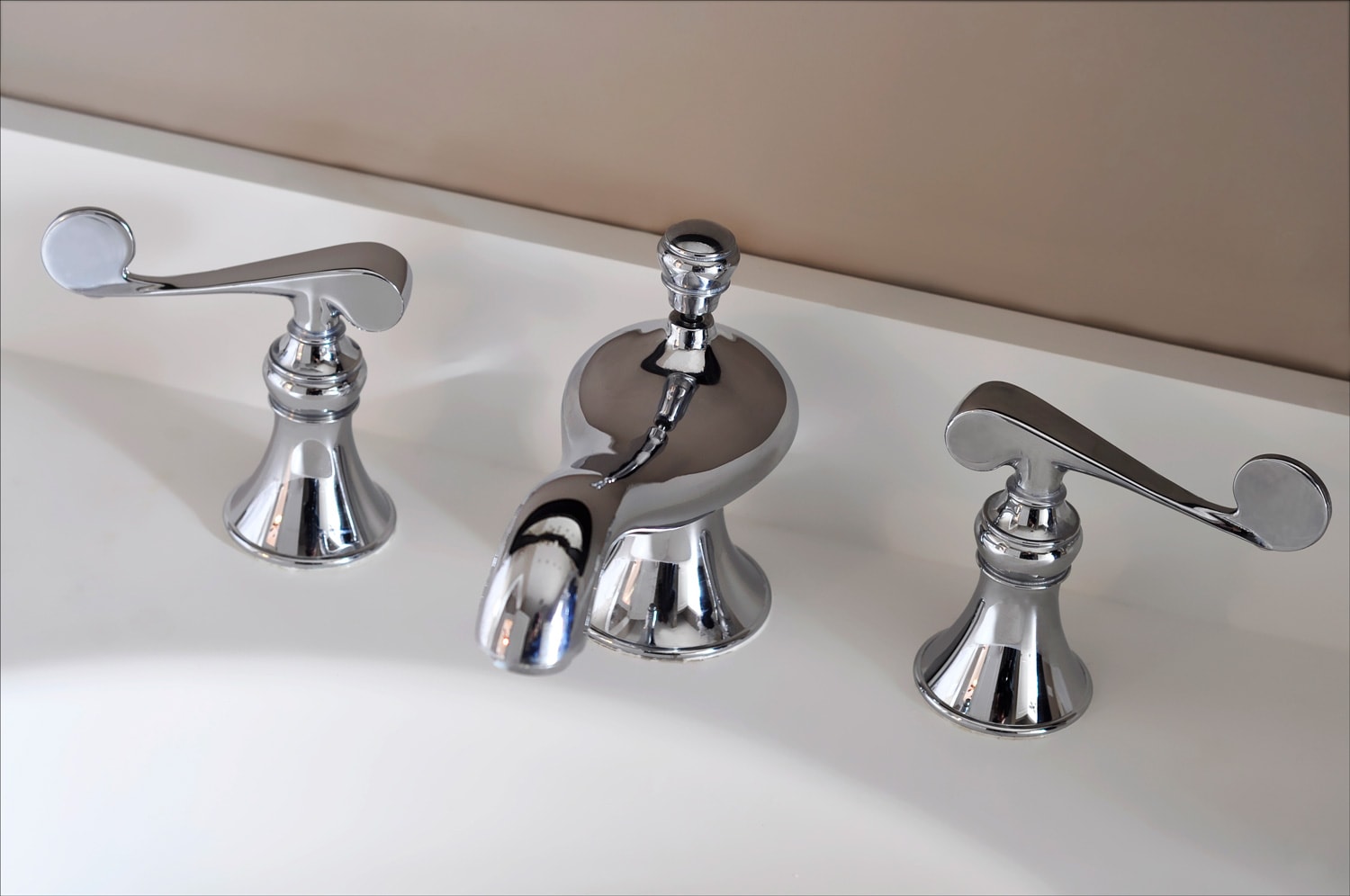
Before proceeding with this project, make sure that your chosen double-handle faucet can fit in your preferred sink. Assuming that you already made the necessary measurements and you now have the double-handle sink ready, continue the installation by following these steps:
What You’ll Need
- Wrenches
- Screwdrivers
- Bucket
- Double-handle faucet kit
- Double-handle sink
Step-by-Step Guide
- Make sure to turn off the main water supply to prevent leaks while you’re installing the new faucet.
- Place a bucket underneath the sink to catch excess water.
- Disconnect the supply lines with an adjustable wrench.
- Take out the single-handle faucet by carefully pulling it out from its mounts.
- Install the new sink with the holes fit for a double-handle faucet.
- Connect the hot and cold supply lines to the new faucet’s connectors.
- Turn on the water supply and check for leaks.
Check out this double-handle faucet on Amazon.
How To Convert A Two-Handle Kitchen Faucet To A Single-Handle Faucet
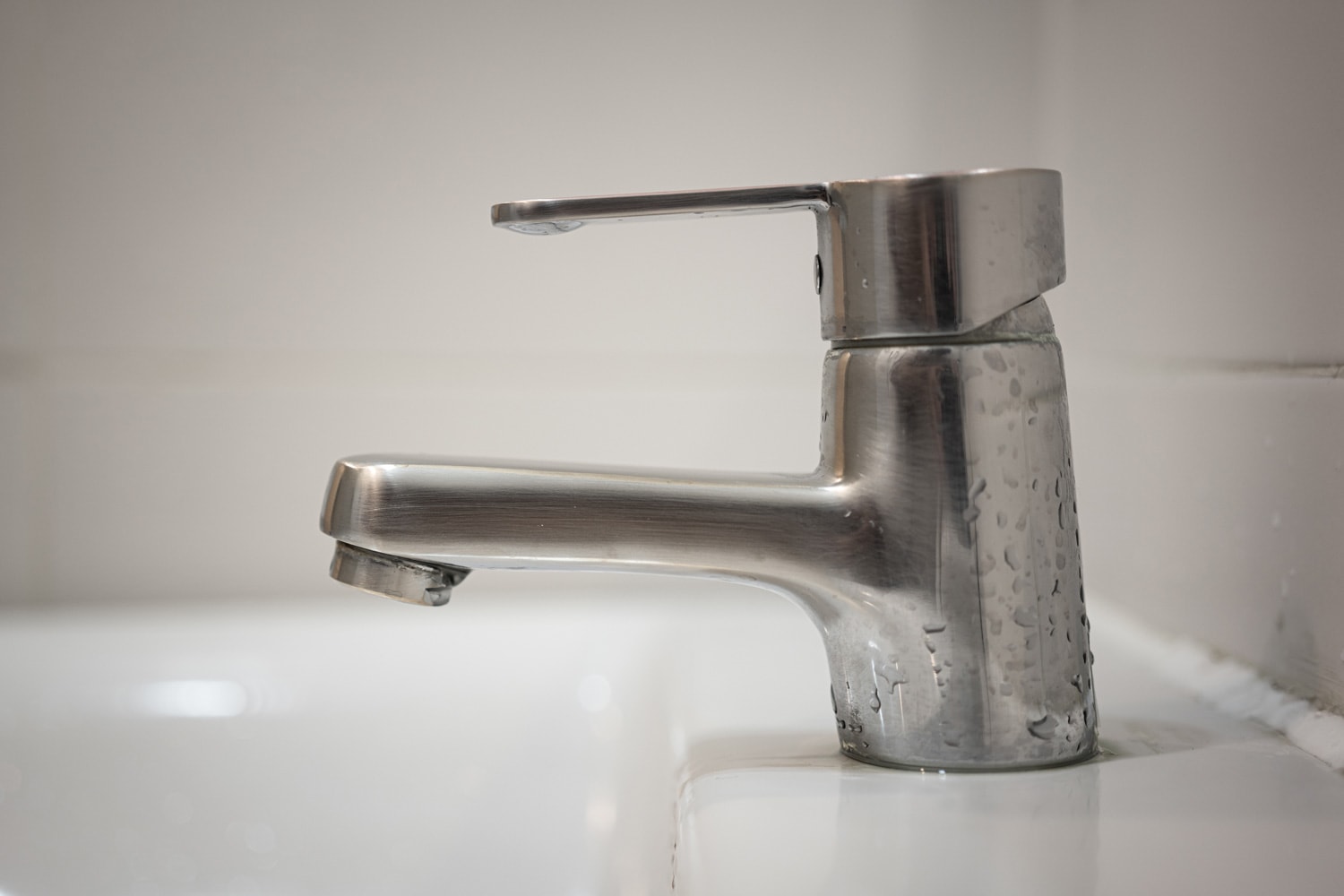
Take note that the process to convert a two-handle kitchen faucet to hold a single-handle tap is roughly the same when installing a single-handle faucet on a two-handle sink. But take note of some important details in the following steps to know vital differences:
What You’ll Need
- Wrenches
- Bucket
- Towels or pieces of cloth
- Silicone caulk
- Deck plate
- Sink hole covers
Step-by-Step Guide
- Turn off the water supply to prevent leaks from occurring while setting up the new faucet.
- Place the bucket underneath the sink to catch any excess water that may escape.
- Remove the lock nuts and bolts that secure the faucet to the sink. You may need to use a wrench for this step.
- Disconnect the two-handle faucet from the attached water lines.
- Clean the residue from the old faucet installation with towels or pieces of cloth.
- Apply silicone caulk over the sink holes that you won’t use. Then, install the sink hole covers.
- Put a reasonable amount of silicone underneath the deck plate.
- Place the deck plate on the same location as the old faucet.
- Install the single-handle faucet and connect it to the water supply lines.
- Turn on the main water supply and check if the faucet’s connections are secure.
Check out this single-handle faucet on Amazon.
Gain additional insight on this installation process by watching the video below:
Final Words
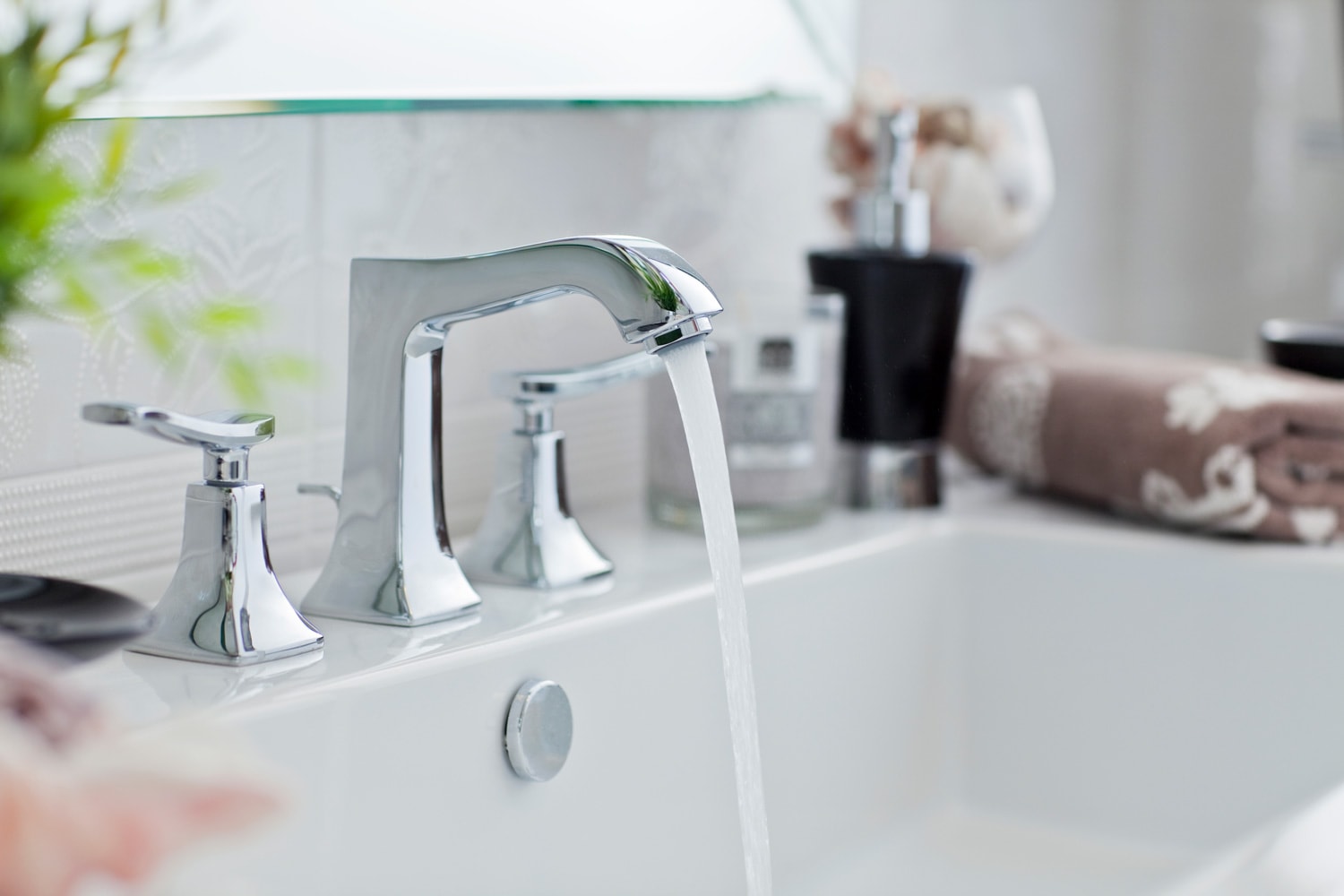
Homeowners can install their preferred kitchen faucets into their bathroom sinks. But it’s still necessary to know the differences between bathroom and kitchen faucets before proceeding with the installation job. Understanding these distinctions will aid installers in preparing for the potential challenges of the installation process.






